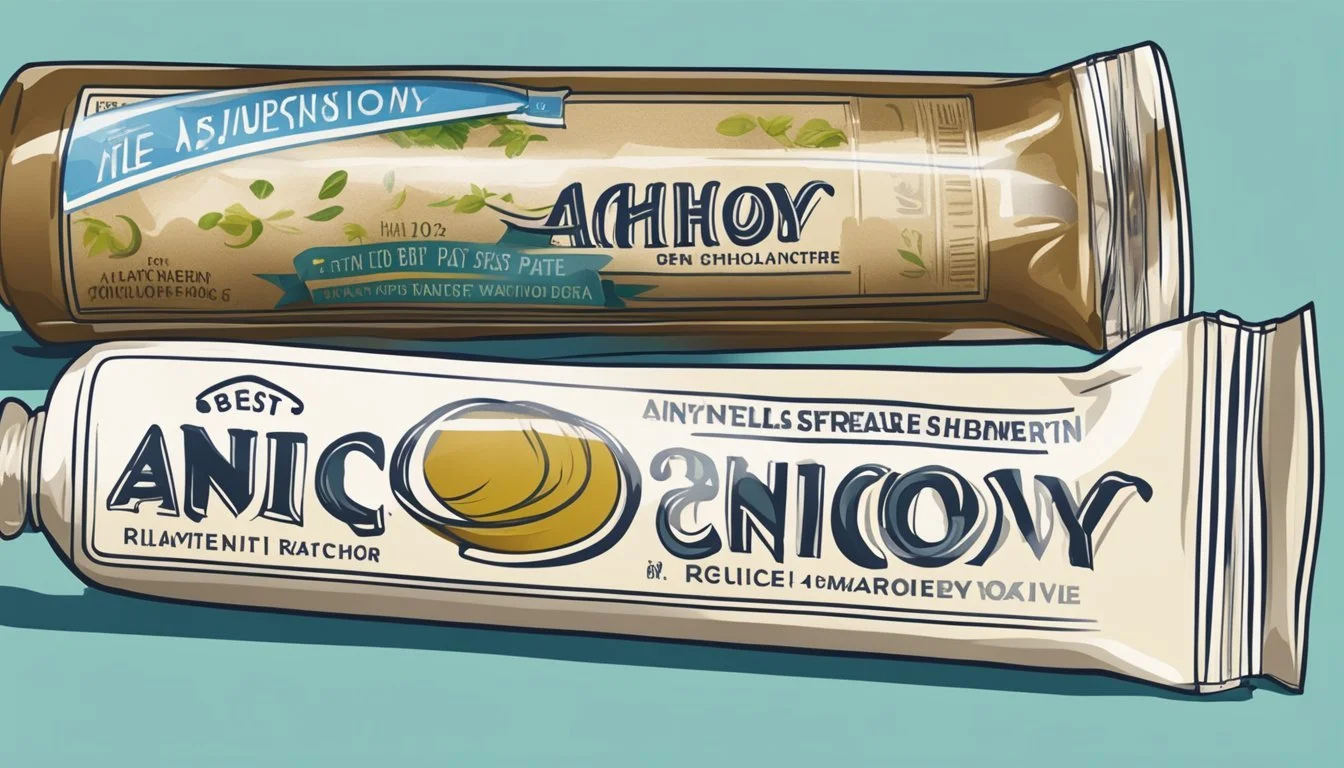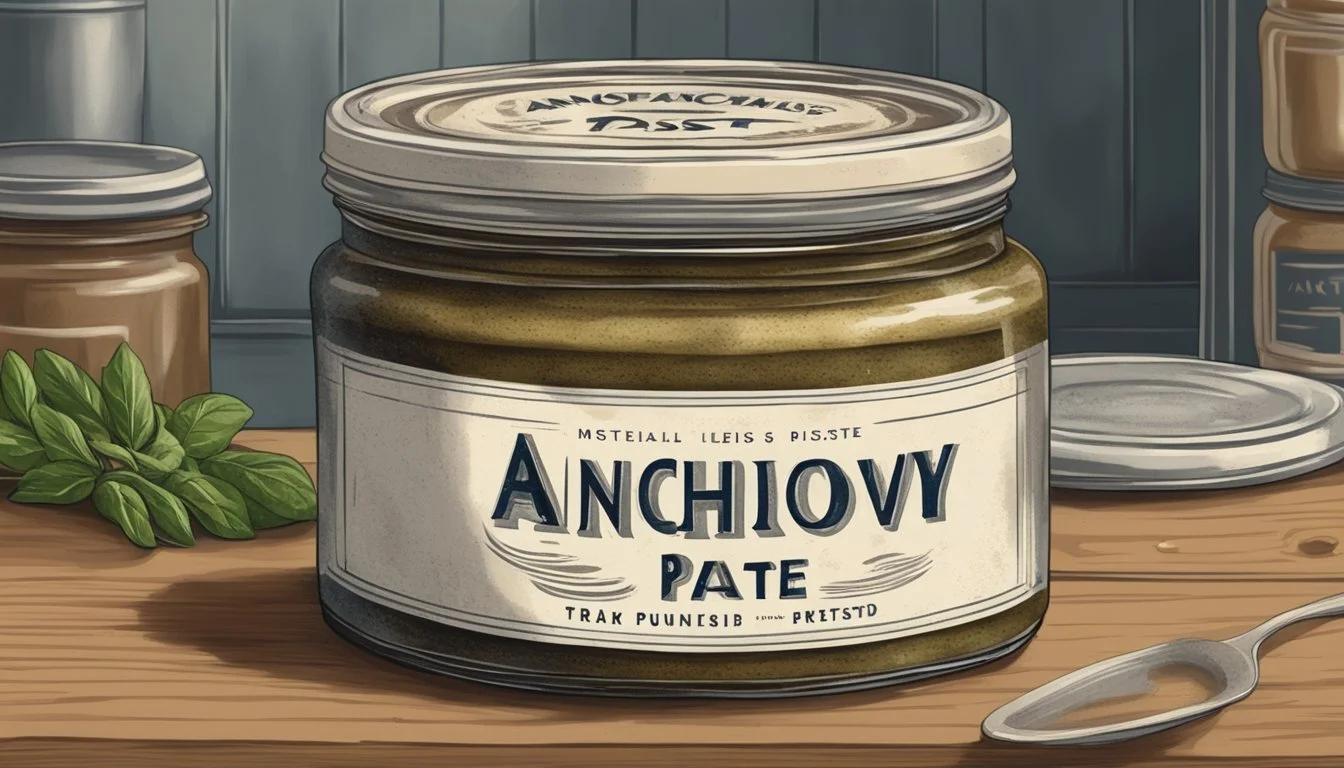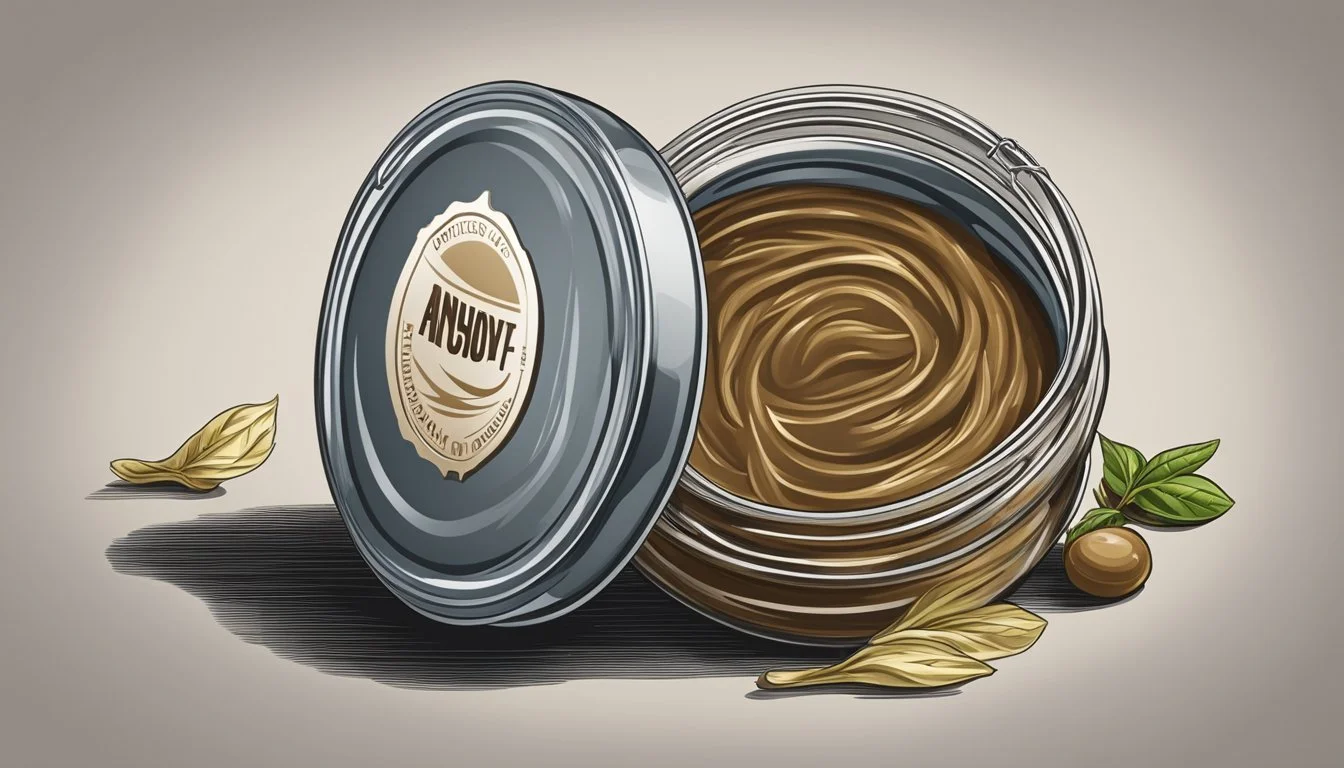How Long Does Anchovy Paste Last?
Unveiling Shelf Life and Storage Tips
Anchovy paste, a condiment cherished for its ability to add a punch of umami to dishes, is a versatile and flavorful ingredient commonly used in cooking. Derived from dried, salted anchovies, (What wine goes well with anchovies?) this paste serves as a convenient way to incorporate the savory depth of anchovies into recipes without the need for handling whole fish. Due to its concentrated flavor, it’s used sparingly and often incorporated into sauces, dressings, and marinades, or even spread onto pizza before baking.
The longevity of anchovy paste is a topic of interest for both home cooks and professional chefs, as it impacts both the economy of kitchen storage and the quality of the dishes prepared. When unopened and stored correctly, anchovy paste can retain its quality for over two years, easily surpassing the date printed on the packaging. Once opened and if properly resealed and refrigerated, the paste can remain fresh for about one year, making it a durable staple in the culinary arsenal.
Understanding the storage conditions is crucial to maintaining the integrity of anchovy paste. It should be kept refrigerated in an airtight container, away from strong-smelling foods to prevent cross-contamination of flavors. Striving for an optimal temperature range between 35-40°F minimizes the risk of spoilage and preserves the anchovy paste’s robust character for its maximum shelf life.
Understanding Anchovy Paste
Anchovy paste is a savory, concentrated ingredient derived from anchovies, known for its versatility in the culinary world and noteworthy nutritional value.
Composition and Varieties
The primary ingredients in anchovy paste include anchovies, salt, and sometimes oil or vinegar. Varieties differ based on additional spices or ingredients used for flavor. The preservation of the fish through salting and the inclusion of oil enhances its shelf life and usability in various culinary applications.
Culinary Uses
Anchovy paste is widely used as a sauce, dressing, or spread and can introduce a depth of flavor to a multitude of dishes. It's notably incorporated into Caesar salad dressing, serves as a robust pizza topping, and enriches pasta dishes (What wine goes well with pasta dishes?). Its powerful taste allows it to complement and enhance the taste of vegetables without overwhelming them.
Nutritional Value
In terms of nutrition, anchovy paste is a potent source of protein, essential fats, and iron. This dense paste delivers substantial energy in small quantities, making it a nutritious addition to meals.
Proteins: Vital for body repair and maintenance.
Fat: Contains omega-3 fatty acids, beneficial for heart health.
Nutrition: Packed with vitamins and minerals, anchovy paste is a valuable ingredient for a healthy diet.
Proper Storage Methods
Ensuring that anchovy paste retains its quality and extends its shelf life requires proper storage techniques. Adhering to storage recommendations maintains the paste's flavor and prevents spoilage.
Unopened Jars and Tubes
Before opening, jars and tubes of anchovy paste should be stored in a pantry or any other cool, dry place. Exposure to heat and moisture can degrade the product, so it's imperative to find an optimal spot where temperature fluctuations are minimal. The expiration date on the packaging serves as the best initial estimate for shelf life, but when stored correctly, unopened anchovy paste can typically last for over two years.
After Opening
Once opened, anchovy paste must be refrigerated. To maintain quality, one should transfer the paste to an airtight container if the original packaging does not adequately seal. Some sources emphasize keeping the paste submerged in olive oil to prevent exposure to air. Refrigeration can preserve the paste's quality for 6 to 12 months. Signs of spoilage include a sour smell, mold, or discoloration.
Freezing Options
For a longer storage alternative, anchovy paste can be frozen. To freeze, one might place the paste in airtight containers or wrap it tightly in plastic wrap and then in foil to prevent freezer burn. While freezing can extend the paste's usability, the ideal shelf life when frozen is up to 3 months. It is important to note, however, that freezing may slightly alter the texture or taste upon thawing.
Shelf Life and Expiration
The shelf life of anchovy paste can vary depending on whether the product is opened or unopened and how it is stored. Knowing how to determine freshness and recognizing quality indicators are key to preventing foodborne illness.
Determining Freshness
Anchovy paste, when unopened and stored in a cool, dry place, can last for up to two years. Once opened, it should be refrigerated and can generally remain fresh for consumption for six to twelve months. The user should assess the freshness by checking the expiration date and by evaluating the paste's color and aroma.
Expiration and Quality Indicators
A key quality indicator for anchovy paste is its smell; a fresh paste should have a briny, salty aroma, while a sour smell might suggest spoilage. The paste should maintain its characteristic flavor and should not taste off or sour. Visual indicators include its color; if the paste has a discolored appearance or signs of mold, it should not be used.
Food Safety Concerns
Food safety is paramount when considering the shelf life of anchovy paste. Using expired anchovy paste can lead to foodborne illnesses caused by bacteria. Furthermore, to prevent cross-contamination, one should use clean utensils when handling the paste. Storing the paste correctly is essential to limit exposure to contamination and avoid spoilage. If the packaging shows signs of rust or damage, this can also influence the quality and safety of the product.
Utilization in Cooking
Anchovy paste is a versatile ingredient cherished for its ability to enrich dishes with a burst of umami. Its concentrated flavor makes it a key component in a myriad of recipes, enhancing both the taste and aroma of various culinary creations.
Enhancing Flavors
Anchovy paste serves as an integral flavor enhancer, infusing rich, savory notes into a range of recipes. It's a secret weapon to elevate the umami character in dishes, harmoniously melding with ingredients to deepen their inherent flavors without overwhelming them.
Tomato Sauce: A small amount, such as ½ teaspoon of anchovy paste, can enhance the taste complexity.
Soups and Stews: Incorporating anchovy paste can add a layer of richness that imbues these dishes with greater flavor dimension.
Salad Dressings and Marinades: Anchovy paste imparts a salty depth that complements the acidity of lemon juice or vinegar.
Recipe Ideas
Crafting recipes with anchovy paste allows cooks to deliver memorable meals with nuanced flavors.
Caesar Salad Dressing: Whisk together anchovy paste with egg yolks, garlic, Dijon mustard, and lemon juice, then drizzle in olive oil for the iconic Caesar dressing.
Marinades for Meats: Combine anchovy paste with ingredients like garlic, olive oil, and lemon juice to create marinades that tenderize and season meats like steak.
Fish Sauce (how long does fish sauce last?) and Worcestershire Alternatives: Use anchovy paste as a substitute in recipes calling for fish sauce or Worcestershire sauce (how long does worcestershire sauce last?) to contribute similar salty and umami notes.
Pairing with Ingredients
When pairing anchovy paste with other ingredients, one should consider the complementary flavors that meld well to create a balanced dish.
Cheese: Bold cheeses can stand up to the robust flavor of anchovy paste, making it suitably paired in sauces or toppings.
Vegetables: Ingredients like bitter greens or sweet roasted vegetables (What wine goes well with roasted vegetables?) can be enhanced with the salty tang of anchovy paste.
Sardines (how long do sardines last?): In recipes where sardine flavor is desired but not the texture, anchovy paste can act as an appropriate stand-in.
By understanding the characteristics of anchovy paste, chefs and home cooks can confidently integrate it into a myriad of dishes, from marinades and dressings to complex sauces and stews, infusing them with an unmatched depth of flavor.
Additional Information
In this section, dedicated to anchovy paste longevity, readers will gain insights into the nuances of selecting high-quality anchovy paste, the best practices for its preservation, and its culinary influence across various cultures.
Sourcing and Selecting
When selecting anchovy paste, one should consider the form in which the anchovies are processed. Anchovy fillets that are salt-packed tend to have a longer shelf life due to the preserving nature of salt. Jarred or tube varieties of anchovy paste are quite convenient and typically have a significant shelf life if stored properly. Look for paste that originates from reputable sources; Italy is renowned for its quality anchovy paste which is a staple in many pasta dishes.
Quality indicators:
Color: A rich brown to reddish-brown hue.
Texture: Consistent and spreadable without any large fillet chunks.
Origins: Noted on the packaging, with preference for regions known for high-quality anchovies.
Preservation Techniques
Anchovy paste's preservation is similar to that of the whole anchovy. Salt-packed anchovies undergo a fermentation process that contributes to their distinct flavor and longevity. Once transferred to a paste, the anchovy product should be kept in a dry, cool place before opening and refrigerated after. Storage conditions directly impact the shelf life of anchovy paste.
Storage recommendations:
Before opening: Keep in a cool, dry pantry away from direct sunlight.
After opening: Refrigerate, ensuring the cap is sealed tightly.
Tube anchovy paste may last up to a year when refrigerated, while jarred may have a shorter shelf life, approximately 2-3 months.
Global Influence
Anchovy paste is a significant ingredient in international cuisine, contributing umami and depth to various dishes across different cultures. Its use is not confined to Italian kitchens; it's a versatile ingredient used worldwide in pasta dishes, dressings, and marinades, among other culinary applications. Proper understanding and handling of anchovy paste can enhance its use in the kitchen and ensure that cooks around the globe can benefit from its unique flavor.







